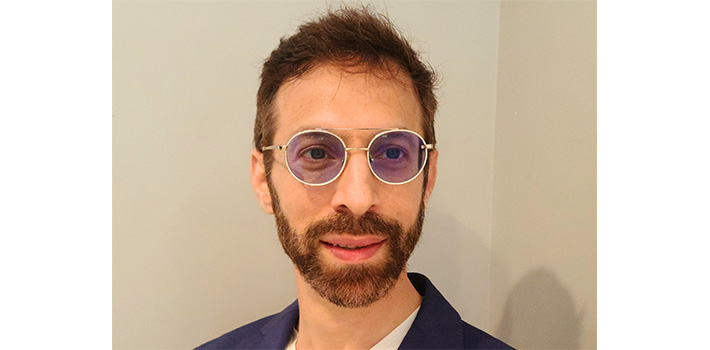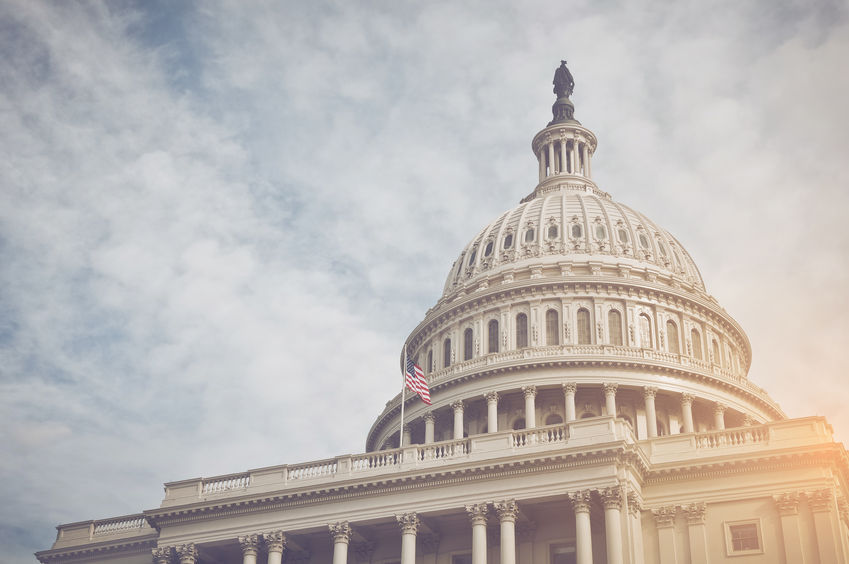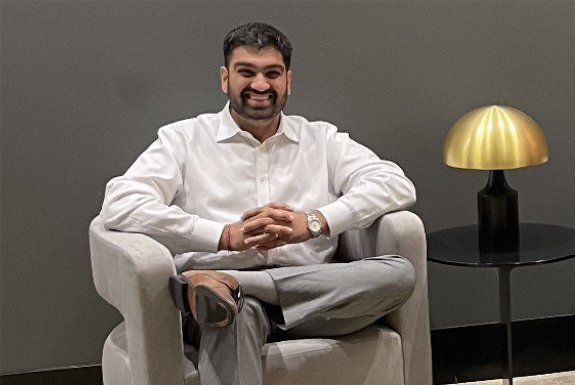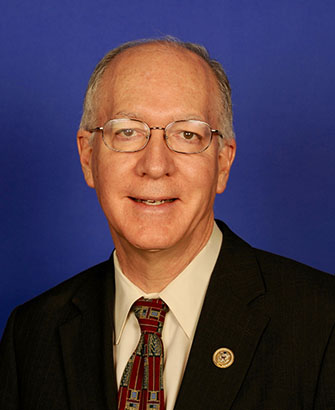Articles by Adam Zaki
Adam is a Reporter from Long Island and graduate of Brooklyn College.
Q&A with Isaac Wagschal on One Percent Ventures’ Intentions to Transform MCA
October 21, 2021One Percent Ventures, a loaded name with implications depending on who reads it, is the latest small business funding company to enter the fray. No, it’s not funding for the one percent, but rather the numerical percentage the company would make off first-time clients with near-perfect performance. They’d make just one percent…
The concept, which caught the attention of deBanked, had to be explained in detail, especially when a merchant paying only $500 on a $50,000 advance was communicated as an example. Say what? The catch is in a rebate and the cost independent of the broker’s commission. Nevertheless, One Percent Ventures CEO Isaac Wagschal seems to be bringing in a new concept, one that was originally supposed to be 0%, he says, but he was already stuck with his company name. deBanked did a Q&A to find out exactly how it all works.
– The Editor
Q&A

Q (Adam Zaki): Why did you choose the name One Percent Ventures?
A (Isaac Wagschal): The original idea for One Percent Ventures wasn’t to be a funding company that gives one percent deals. Originally, we were going to provide branding and marketing services to small businesses who do not have any marketing, but can benefit from it. Our compensation was to be a one percent partnership in the company. Then a situation came my way where I was able to form a team of people with extensive knowledge and experience in the MCA space. I grabbed the opportunity and switched from marketing to funding small business.
We designed the product with a rebate that refunds basically the entire cost of the first advance. I realized that if we changed the rebate where instead of refunding 100% of the 1st advance factor cost, we keep 1%, I wouldn’t have to change the name and logo of the company. This is the reason our merchants are now paying one percent. If I had not already determined the name, the merchants would have been paying zero instead of one percent.
Q: What was the most difficult part of the shift from marketing to funding?
A: Shifting from marketing to funding was very difficult because of the nature of the market which existed at that time. That difficult transition forced the creation of our unique product, which includes rebates and payment-pauses. I looked into the mainstream MCA product in-depth, and realized that from a marketing point of view the product is flawed, and cannot be marketed properly. The more I scrutinized the MCA industry, I realized that the problems are not just from a marketing perspective. There are existential problems that need to be addressed, or they will eventually cause the demise of the industry altogether. Default rates are so high that mathematically the industry is forced to charge extremely high prices. This makes the product unmarketable to merchants who are not in the absolutely highest risk bracket.
I knew that unless we remade the product to be more attractive and marketable to a larger market share, the funding industry had no tangible room for expansion. Why would we want to get into this market space in the first place? As a team, we agreed that instead of hiring ISO-reps and underwriters, we would first hire accountants, actuaries, and data analysts.
We applied the same psychological principles used in marketing, where you try to predict and manipulate people’s reactions. By doing that, we were able to redesign the old MCA product. We introduced a rebate system that gives the merchant an opportunity to potentially only pay a $500.00 factor cost on a $50k advance. In this way, we expanded the current market share, and turned it into a hot product. I hear from ISOs on a daily basis who recontacted old unsuccessful leads, and turned them into deals after they presented the OPV-rebate and payment-pause-award system. This proved that the OPV product is expanding the market share.
Q: What are your thoughts about the market share in MCA?
A: The current market share consists of the absolute highest risk merchants who are willing to pay such high prices. It is becoming harder and harder to maintain deal flow. This has forced the industry to slowly keep raising the standard with respect to how many positions we are willing to accept. If nothing happens, we will soon find ourselves talking about 10th and 15th positions. This is certainly not sustainable, and puts an amazing amount of stress on the ISOs who are working tirelessly to maintain deal flow. They see it all happening, but feel helpless because at the end of the day, they can only present a product that a funder puts on the table. The tiny market of willing and able merchants is also a source of stress, and a key factor to the mistrust that is largely present between ISOs and funders.
Q: What are your thoughts on a relationship with the ISOs and funders?
A: Let’s face it, the way the current ISO-Funder relationship is set up scientifically creates a conflict of interest. It is simple math – when a funder loses a renewal that carried a potential profit of 50k and thinks that the deal could have happened if not for the 14 points that is reserved for the ISO, there is a natural conflict of interest. You can be honest with your ISOs and even give Rolexes and call them your partners on paper, but the spreadsheet still calculates a conflict of interest at the end. The lavish gifts are nice, but they do not eliminate the scientific conflict of interest.
We have corrected this fundamental problem by designing our business model so that our ISOs are genuine partners. This too is simple math – when a funder’s product is designed to issue an unheard-of large rebate, and 3rd party costs are deducted from the final rebate amount, the merchant will obviously be super happy because of the astronomic refund. More importantly, by using this model, the conflict of interests between ISO and funder is erased because mathematically the merchant paid the commission, not the funder!
Q: How does OPV make money? How do merchants qualify for all of your incentives? What are these incentives?
A: Let me first answer the latter part and explain how our product works and then I’ll come back to answer how we make money.
Our typical product is a ninety-day term at 1.49 sell rate. At mid-term, if the merchant didn’t miss any payments, they are eligible for an add-on, largely known as a renewal. At this phase, we begin to issue an OPV-Pause award after each cycle of four consecutive successfully completed payments. The pause awards can be submitted smoothly on our automated online system either one at a time, or they can be saved and initiate a pause for an entire week. After the final payment, if the merchant didn’t miss more than three payments, excluding the pauses, we refund the entire factor cost of the first advance except for 3rd party fees, processing fees, and 1% of the advance, which gives us only $500 profit on a 50k advance.
Every merchant that qualifies for funding, automatically qualifies for all the incentives. The OPV funding model is actually designed to perform better when more merchants actually receive the rebate. Why? Because that also means there has been a drop in the default rates. If every merchant was to qualify for the rebate, it would mean we had a zero percent default rate, which would allow us to make a healthy return, even if we made profit only on the 2nd advance.
This is precisely the reason we added the OPV-Pause awards. It is in our best interest to keep the merchant motivated to stay current on their payments, in order to qualify for the rebate. We even added a condition that in the event a merchant doesn’t have an unused pause award, they can purchase an OPV-Pause for 20% the daily payment. The goal must be to lower default rates so that we can lower the end cost. In this way we can expand the market share and keep the MCA industry alive. The OPV product is designed to do just that.
Q: What are your immediate goals for OPV? How about long term?
A: Phase I was designing the product and building the platform. Now in phase II, we plan to fund deals for at least a year before making any significant changes. We want to build relationships and earn trust by being transparent and honest, even when it hurts. At phase III we will analyze the data and make tweaks we deem necessary. At phase IV, given that the canary returned from the coal mine, we will share our intelligence, and license the OPV platform to reputable funders throughout the MCA industry.
Q: What is your outlook on the future of the non-bank small business funding/lending sphere?
A: In an effort to truly make a constructive change towards preserving the MCA industry, I will speak openly about the elephant in the room. We are all aware of the unfavorable new laws and regulations that constantly threaten our existence. As long as there are politicians who need to win elections, they will be on the hunt for “do-good projects.” There will always be a lobbyist that is looking for deal-flow, who is willing to provide the perfect “do-good” project. One of those will be – “Let’s save the poor merchant from the greedy funder.” The politician can only succeed because the nature of the MCA industry is such that our funders share only the good news. The bad news is confidential, so there is a stigma of excess profit in the MCA sphere. If we can successfully change that stigma, then we will be a thriving industry for many years to come.
Study Finds Fintech Puts Customer Rentention on the Clock with Biometrics
October 21, 2021 Onfido and Okta, a verification authenticity company and an independent identity provider, respectively, found that consumer-based businesses —regardless of industry—need to earn their customer’s trust in no longer than ten minutes or risk losing their business altogether.
Onfido and Okta, a verification authenticity company and an independent identity provider, respectively, found that consumer-based businesses —regardless of industry—need to earn their customer’s trust in no longer than ten minutes or risk losing their business altogether.
According to the report, 65% of customers who want to open a bank account want the process to be less than ten minutes, 69% when booking a car rental, 72% when opening a telemedicine account, and 77% when registering a gaming account, among other industries.
“From the moment a consumer visits a service provider’s website or downloads an app, they’re evaluating whether the business can deliver a trusted digital service, providing security and keeping their data private,” says Mike Tuchen, CEO of Onfido. “Businesses have just minutes to establish the confidence that consumers expect in the digital world. Those that can offer low or zero friction during verification and authentication will positively differentiate themselves in a market where digital services have become the norm and consumer trust breeds brand loyalty.”
After surveying 5,000 consumers from across the United States and Europe, the companies found that the moment the onboarding process begins in a virtual space, customers aren’t looking to spend much time putting information into a database to complete their transaction. The study found that customers felt that brands should know and trust them, while also having a strong desire for a seamless verification process rather than a fraud-preventing rigorous one.
Half of consumers expect that it should take less than three minutes to approve a banking transaction (49%) or place a bet (48%), and approximately 1 in 3 (35%) consumers believe it should take the same time to fill prescriptions.
Those consumers that were evaluated also desired to have companies recognize them on multiple devices, which just a third of responses claimed businesses currently do. 70% of customers claimed they “suffered” from a lack of an efficient digital process in a business transaction. Biometrics, according to the study, will be a way to solve these inefficiencies in the authentication and transactional software space.
In a blog post that accompanied the release, Onfido broke down the confidence that consumers have in Biometrics in the marketplace. According to them, 80% of customers have confidence in both the convenience and security of Biometrics.
“Let’s say you’ve verified an identity document. You need Onfido’s biometric technology to verify that the document truly belongs to the person making the transaction. So biometrics adds a layer of protection against stolen IDs and impersonation attacks,” the blog reads.
“Ensuring that digital account onboarding and access meets users’ expectations for speed, experience and security will require many businesses to reassess their identity platform requirements,” says Ben King, Regional Chief Security Officer, Okta. With biometric recognition putting identity at the heart of the authentication process to offer a robust yet seamless experience across any and every device, it is little surprise that consumers worldwide are increasingly opting for it in place of traditional passwords or in-branch verification checks.”
SBA Task Force Set to Begin Campaign
October 19, 2021 In response to an unprecedented economic situation, a mixed group of regulators, bankers, small business owners, funders, attorneys, and social media representatives are coming together in a task force to work with the SBA, members of Congress, small businesses and entrepreneurs to transition small business into a “new phase.”
In response to an unprecedented economic situation, a mixed group of regulators, bankers, small business owners, funders, attorneys, and social media representatives are coming together in a task force to work with the SBA, members of Congress, small businesses and entrepreneurs to transition small business into a “new phase.”
Dubbed the SBA Task Force at last week’s Bipartisan Committee summit on small business recovery, the group’s goals are to address the state of small business in the U.S., how the current economical and political climate is impacting the practices of merchants across the country, and to address concerns from interested parties directly to the federal government.
“The SBA is at a crucial moment: its laudable performance during the COVID crisis has thrust upon the agency new expectations and new responsibilities,” said Pradeep Belur, former COO of the SBA and co-chair of the committee. “To fulfill those, [the] SBA needs not only enhanced capacity but also modernization to enable it to execute effectively. I’m honored to help chair this task force and pursue measures that will support the agency and help the heart of America’s economy.”
Alongside Belur as co-chair of the committee is Ann Marie Mehlum, a Senior Advisor at FS Vector with almost four decades of experience in banking. Much like Belur, Mehlum is committed to continue the largely unfinished project of improving the operating conditions for small businesses.
“The work of assisting small businesses is never finished—the SBA has continually sought to respond to new needs and reach more types of small companies,” Mehlum said. “The members of this task force, which I’m delighted to help chair, are committed to working with the agency and Congress to improve the ways in which that work is carried out.”
The founder of the committee, Angela McIver, is the owner of an after-school math program for children based in Philadelphia. When faced with pandemic related troubles, McIver pivoted her business from a brick and mortar learning program into a fully virtual, nation-wide learning platform.
“One of the smartest things I did was develop a relationship with a community bank” said McIver, when asked what advice she would give to small businesses at the BPC’s summit. “We didn’t have a lot of the challenges that small businesses had because we had a relationship with a small bank that knew who we were, knew our challenges, and [they] were able to step in when it was necessary.”
Other members of note on the force are Christopher R. Upperman, a Manager & Team Lead in the Governance Organization at Facebook, Jessica Johnson-Cope, President, Johnson Security Bureau and co-chair of the 10,000 Small Businesses Voices National Leadership Council, and Ryan Metcalf, Head of U.S. Public Policy and Global Social Impact at Funding Circle.
“Our participation in the BPC’s task force reflects our ongoing commitment to advocate for government policies that are in the best interest of small business owners” said Metcalf, exclusively to deBanked. “We truly believe that the strongest path forward for the SBA involves leveraging the proven capabilities of fintechs to quickly and efficiently reach typically underserved communities through a modernized approach to government-backed small business lending.”
Metcalf and his company seemed to be excited to take part in the committee, having a direct impact on the space in which their business operates. “On behalf of Funding Circle, I look forward to working with stakeholders across the lending landscape to support an effective bipartisan SBA reauthorization that best prepares the agency to help small business owners,” he said.
Members of the committee are confident that the group will help modernize the practices of the SBA while also empowering them. “The government agency dedicated to supporting [small businesses] must do the same and adapt its systems and programs to support that evolution,” said BPC Board Member and former Senator and Chair of the Committee on Small Business and Entrepreneurship Olympia Snowe. “I’m confident that this task force will successfully develop ideas and recommendations to enable the SBA to do that.”
Pandemic-Induced Pivot Results in Innovative Lending Software
October 15, 2021 “What the hell are we going to do now?”
“What the hell are we going to do now?”
Kunal Bhasin, CEO of 1West, saw the light at the end of the tunnel for his business in March of 2020. Instead of closing his doors and pursuing other options in finance, Bhasin held strong and began developing a product that was merely an idea prior to his business’s abrupt halt.
“I made the decision at that point when everyone was running, I hired two full time engineers. I said hey, I’ve had this idea for a long time, the whole company has had this idea for a long time, we just never had the time to implement, and then all we had is time because we [weren’t] closing that many deals.”
The idea, a software called ABLE (Automated Business Lending Engine) is a platform that minimizes the lapsed time that occurs in the funding process. “There were deals all over the place in different people’s inboxes. And then those people would have to put those deals into our processors, which created huge gaps of time,” said Bhasin.
“We needed to centralize the deal flow. Whether the deal is coming from a partner, or the deal is coming from a customer, [we needed] a centralized place where a customer could land and start completing the process.”
With the help of his former college roommate, engineers, and staff, Bhasin put his idea to fruition— and ABLE took off. “We rolled up our sleeves and spent the better part of the last 16 months building it, and now the largest percentage of my time devoted to running 1West is on the software and the platform.”
Bhasin claims that his product gives his company a huge competitive advantage, as he is able to use AI to evaluate, process, and determine the type of funding and through which lender is best on an individual basis.
“[ABLE] really shrinks that entire gap time so when the lenders get in early morning, when the funders get in early morning, our stuff is always in queue, and it’s created really nice returns on the amount of customers we’re getting and the amount of deals we’re funding.”
The automation of the application process has allowed potential borrowers to not only find the ideal package for their needs, but allows them to apply for different types of capital streams, something that would take tons of manpower and time without the ABLE software.
“Greater than 90% of the customers who come into ABLE apply for more than one product,” said Bhasin.
When asked about if there were any plans to license the product in the future, Bhasin was hesitant to give a definite answer for the future of his creation. ABLE is already white labeled by 1West for brokers.
“Maybe,” he said, I want 1West to reap the benefits of it for 6-12 months and fix all the tweaks we have to make. We have a lot going on.”
Fintech Helps Small Businesses More Than Banks, says US Rep
October 14, 2021 At the Bipartisan Policy Center’s summit on small business recovery on Thursday, Rep. Bill Foster (D-IL) of the US House of representatives credited fintech for helping small businesses survive pandemic-influenced hardships. “I was very struck recently, if you look at the PPP program, some of the most effective providers were fintech. There is some evidence that says fintech providers were more effective than banks” said Foster.
At the Bipartisan Policy Center’s summit on small business recovery on Thursday, Rep. Bill Foster (D-IL) of the US House of representatives credited fintech for helping small businesses survive pandemic-influenced hardships. “I was very struck recently, if you look at the PPP program, some of the most effective providers were fintech. There is some evidence that says fintech providers were more effective than banks” said Foster.
Fintech beat the banks not only in the allocation and distribution of PPP money, but providing unprecedented help to small businesses owned by individuals from underserved communities, according to Foster. “I think that is something that we have to make sure that [the government] is doing everything we can to support the use of technology by small businesses.”
With quick access to capital, innovative ways to pull data and store information, flexible lending and repayment options, and a mass array of competition, non-bank finance alongside fintech allowed small businesses across America the chance to survive when the odds were stacked against them. Traditional banks, tied up by regulations and bureaucratic processes, would have never been able to provide the capital needed to the countless businesses who relied on PPP loans to stay alive.
Foster has used fintech’s performance as a way to make his case for the necessity of the industry’s role in the everyday life of all Americans. “We’re trying to do a better job in getting a secure digital ID in the hands of all Americans” he said. “Providing a guarantee for all Americans, regardless of what their financial situation is, that they will have access to at least a basic internet connection, basic broadband connection, and a low end [mobile] device.”
Foster spoke about his plan to bundle these ideas with a mindset of fraud prevention, using fintech to provide a digital suite of government issued documents in an effort to counter identity theft. With this, according to Foster, fintech can provide a system in which an individual can prove who they are online, subsequently preventing fraud.
“Small businesses are one of the real victims of identity fraud,” he said. Arizona, Louisiana, and Oklahoma have taken the lead in incorporating fintech into their efforts of fighting small business identity fraud in their states, Foster claimed. He also touched on fintech’s role in the collaboration of digital medical records between healthcare companies and individual practices to enhance the innovation of healthcare processes.
With the government acknowledging fintech’s future nationwide impact on a bipartisan level, the integration of this technology in small businesses and consumers alike at an unprecedented level is just a matter of time.
Elevate Announces New Financing Facility for Non-Prime Credit Product
October 13, 2021
Elevate Credit, Inc., a top provider for credit solutions marketed for non-prime individuals, announced Wednesday a $50 million financing facility, which may increase to $100 million, according to a company press release. The funding is to grow the Today Card, a credit card designed to expand access to credit while promoting intelligent credit decisions for people with less than perfect credit scores.
Financing for the Today Card will come from Park Cities, an asset management and alternative investment company that provides flexible debt solutions to its customers. The partnership will help reduce the amount of capital required by Elevate for the project.
“The Today Card has seen outsized demand and has been the fastest growing brand over the last 12 months,” said Elevate CEO, Jason Harvison. “To continue that growth, we have announced a new lower cost credit facility. Park Cities has demonstrated a deep understanding of our space. I am pleased to both diversify our financing and promote our platform’s ability to serve non-prime consumers at even lower APRs.”
Backed by Mastercard, Today Card offers all the benefits of a regular credit card to individuals who may not qualify for the same perks through other creditors. Family share, fraud control, and flexible payment options are all packaged into the Today Card product. These options will familiarize cardholders with these types of benefits should their credit improve in the future and they qualify for other cards with different banks.
“Elevate is changing the game for non-prime Americans. We are proud to partner with a mission driven organization and help enable their growth,” said Park Cities Managing Partner, Alex Dunev.
Elevate has originated $9.2 billion in non-prime credit to more than 2.6 million non-prime consumers to date, and has saved its customers more than $8.5 billion versus the cost of payday loans, according to the report. They already offer borrower incentives like reduced interest rates over time, free credit monitoring, and free financial training.
What Makes a Great ISO?
October 13, 2021 Working and developing relationships with ISO’s can be some of the best and most difficult parts of working in the small business finance industry. The relationships between the merchants and these individuals can make or break the success of a funder, and a great ISO can take a funder and the merchant to the next level.
Working and developing relationships with ISO’s can be some of the best and most difficult parts of working in the small business finance industry. The relationships between the merchants and these individuals can make or break the success of a funder, and a great ISO can take a funder and the merchant to the next level.
Kristin Parisi, ISO Relations Manager for Park East Capital, shared with deBanked what traits, characteristics, and commonalities separate the best reps from the rest of the pack.
“I think the top thing is someone that is super attentive,” said Parisi, when asked what is the biggest factor that makes a successful ISO. “Someone [who] is available to speak at all times, after sending something in an email or they send me something, I’ll call them and they’ll pick up, someone easy to reach out to, and someone who cares about the deal.”
Kindness also plays a big factor in making a great ISO according to Parisi, who said that sometimes the attitude of certain reps can impede business and make funding deals much more difficult. “I have come across some people who can be super rude,” she said. According to her, kindness and honesty can make or break not only an individual deal between a funder and a rep, but can be the foundation for the entire relationship between the two.
“It’s like a friendship type of thing,” she said, when describing the ideal relationship between both parties. “Someone who is trustworthy, loyal, someone who won’t screw you over behind your back, who won’t send your deals somewhere, someone who won’t screw you over for money. Honesty is the main thing.”
Parisi credits her success to these developed relationships. “The ISO’s I do work with are all my friends now, and I think we have a great thing going,” she said.
She noted the challenge of dealing with ISO’s from a female perspective, setting boundaries and being assertive while also trying to be kind and develop positive relationships. “Being a woman in this industry is a little different than being a male. I’m kind of approached differently, the girls on my team are approached differently. I’m one for being really kind and honest, but [only] to a certain extent because [ISO’s] will walk all over you.”
Apart from the personality that is projected on the funders themselves, another key trait is the professionalism of the ISO themselves, according to Parisi. She spoke about the younger, money-hungry mentality that can lead to ISO’s becoming disingenuous or difficult to work with. Rather than a hustle and bustle mentality, she credits understanding the terminology and how the industry functions as a desirable trait in a potential ISO.
“You don’t need ten plus years in the industry,” said Parisi. “You need a few months in the industry, you get it, and you’re good.”
Plaid Report Hypes Fintech’s Progress, Potential
October 13, 2021 In their 2021 annual report, fintech giant Plaid claims that more people use fintech products than social media or streaming services in the U.S. Over the past two years, the number of Americans using fintech rose from 58% to 88% – a 52% increase.
In their 2021 annual report, fintech giant Plaid claims that more people use fintech products than social media or streaming services in the U.S. Over the past two years, the number of Americans using fintech rose from 58% to 88% – a 52% increase.
“In terms of consumer technology penetration, fintech has entered the stratosphere of video streaming subscriptions (78%), and social media (72%) and is nearing par with the internet (93%). We’ve reached an era in which financial technology is no longer a corner of the financial system, but approaching its center,” reads the report.
The pandemic is credited as the catalyst for the large consumer engagement, but the report claims that the numbers are here to stay. According to Plaid, consumers have discovered that fintech products save them time and money, boosts fiscal confidence, and helps them make better financial decisions.
The report also found that baby boomers were the fastest-growing sect of fintech users, with boomer consumers doubling fintech engagement over from last year to 79%.
Plaid claims that the access to money managing apps has allowed debtors to save money and pay off debt. The report found that 53% of people who attempted to save money used a budgeting app in 2021, and 56% of people who made a goal to save or invest in the same year used some type of fintech app.
“The Internet has not really come for financial services before, and now it has,” John Pitts, Plaid’s global head of policy, told Fortune. Pitts said the “astonishing” year-on-year increase in consumer use “means that fintech is now one of the most adopted technologies by U.S. consumers.”
The report also evaluated race’s impact on fintech use. “While the vast majority of Americans have bank accounts (95%), minority groups tend to lag behind in access,” the report reads. “Only 87.8% of Hispanic people are banked, but 95% of those we surveyed report using technology to manage their finances. Similarly, while 86% of Black households are banked, 81% of those we surveyed report using technology to manage their finances.”
The report mentions that African Americans use fintech more than white individuals to combat financial problems. They also found that white account holders care less about fees than any other races.
“While the concept of managing your finances digitally has reached mass adoption, none of the individual types of tools has gotten more than 70% adoption,” Pitts said. “For individual types of products and services, there’s still a huge amount of product-level growth left in the market.”































